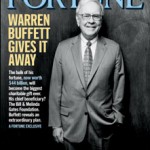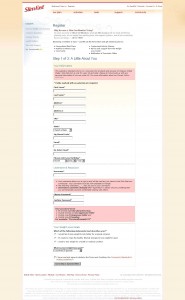Value asymmetry
February 28th, 2019In negotiations, the goal is often to get the most value while giving the least. At first glance this seems like a zero sum proposition – anything one party gives up the other gets. However, the trick is in framing these choices in terms of value. When you begin thinking in terms of value, all parties can come out ahead.
Consider a simple example of clothes that no longer fit. Nostalgia aside, these items have little value to the owner since they do not fit. Let’s call it zero value for simplicity. If someone else needs those clothes, they are willing to pay for it. If the person who needs the clothing values a pair of pants at $5 and only has to give the owner $1 at a garage sale, both people are better off. The buyer got something they value at $5 for just $1 and the seller got rid of something valued at $0 and received $1 for it.
When you start thinking about the world from this perspective, you start seeing these dynamics all over the place. One of the most prevalent places where you see this in business is rewards programs. Often times the value to the company of fulfilling the rewards is negligible while the value to the consumer is quite high.Â
Consider airline tickets – frequent flyers can redeem miles for tickets. This is a perfect example where the cost to the airline is often almost zero. Unless literally every single seat was sold on that flight, there is almost no additional cost to have a reward ticket occupy a seat. However, from a consumer’s perspective it is great since the reward ticket likely saved them hundreds of dollars.
Sometimes companies get the asymmetry wrong – this leads to consumers thinking the rewards programs are not worthwhile. It could be because the rewards are unattractive or it could be that the cost of those rewards is disproportionate to the perceived value.Â
However, the item that has struck a chord with me recently is somewhere in between. When I have a bad experience, I have noticed a distinct trend of companies using credits rather than refunds to compensate. To me, this is quite frustrating – I must now use the service again to actually get the value. It has happened on ride sharing trips where the driver cancels my trip or when a delivery service delivers the wrong items.Â
In these cases, where the company has messed up, it feels a bit disingenuous to offer a credit rather than refund what I paid. Worse still is what GrubHub does, which I now try to avoid. When a wrong delivery was made they provided multiple coupon codes (rather than a single code or account credit) with short duration expiration dates (~2 weeks). Since only one promo code is allowed at a time, giving me promo codes not only prevented me from using other promotions they had running, but forced me to make 3 different purchases if I wanted to redeem the full value of the credit.
So yes, there is great opportunity to use value asymmetry to everyone’s benefit, but it should also be used wisely to avoid unnecessary frustration.Â
This has been a Thought from the Cake Scraps. Â

 If you’re like me, you see a bed full of pillows and wonder what the purpose of all of them could possibly be. After all, if one were to use the bed, all of the pillows would have to be removed and the put back on after the cat nap. It is very easy to think that the extra pillows have no purpose. But, I have found that there is a very subtle error in this way of thinking.
If you’re like me, you see a bed full of pillows and wonder what the purpose of all of them could possibly be. After all, if one were to use the bed, all of the pillows would have to be removed and the put back on after the cat nap. It is very easy to think that the extra pillows have no purpose. But, I have found that there is a very subtle error in this way of thinking. Out in the back there is an area where semi trailers are parked that are not being used. I have not idea how much space, but it can hold a few. What I noticed on a run the other day is that there is a big grass mound/hill between the offices and this parking area. It has been there for a long time, but how much did it cost to build it? I have no idea, but it also makes me wonder, how many people decided to work for Lands’ End, or how many vendors gave a better deal, or how much business has been done because of a great experience on the campus. An experience that was great, in part, because they saw a beautiful grassy hillside with trees instead of parked semi trailers.
Out in the back there is an area where semi trailers are parked that are not being used. I have not idea how much space, but it can hold a few. What I noticed on a run the other day is that there is a big grass mound/hill between the offices and this parking area. It has been there for a long time, but how much did it cost to build it? I have no idea, but it also makes me wonder, how many people decided to work for Lands’ End, or how many vendors gave a better deal, or how much business has been done because of a great experience on the campus. An experience that was great, in part, because they saw a beautiful grassy hillside with trees instead of parked semi trailers. Recently I got quite the offer from
Recently I got quite the offer from 
